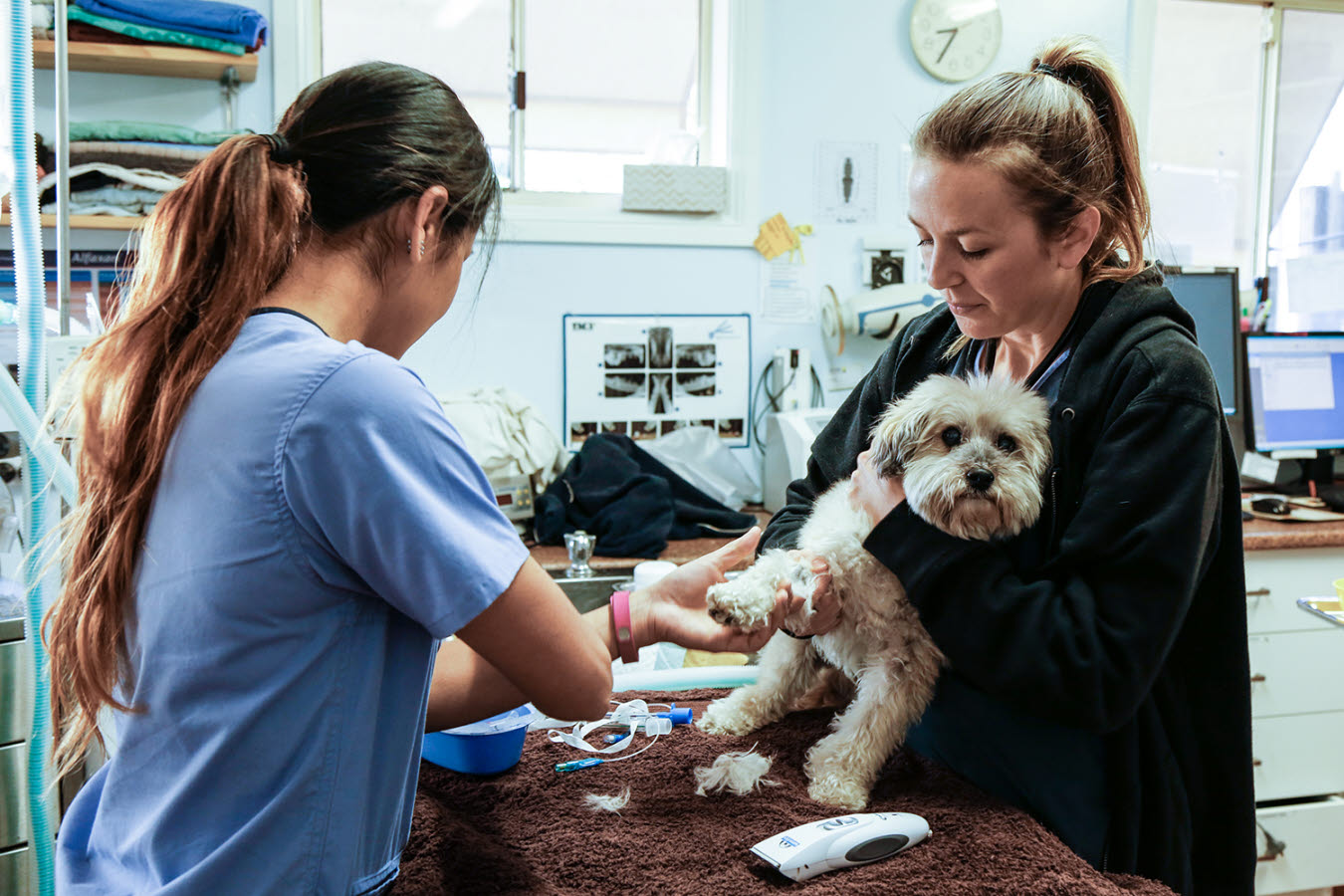What to do if you find a lump on your pet

Lumps on pets are very common but finding them can be alarming. This article will outline things to note if you find a lump on your pet, and what procedures your veterinarian may perform to work out what is causing the lump.
There are numerous different types of lumps. Lumps can be the result of abnormal tissue growth (tumours), an infection (abscesses) and many other processes. They can range from having very serious health implications to being of minimal concern to your pet’s wellbeing.
Any lump on your pet should be assessed by your veterinarian, however providing them with the following information can be very helpful:
How long has the lump been there? When did you notice it?
If a lump has suddenly appeared, it may be due to infection (e.g. a cat fight abscess) or something stuck under the skin (e.g. a grass seed). It is also important to consider that if you have a long-haired dog or cat, or your animal lives outside, the lump may have been there for longer than you think.
Has the lump become bigger recently? If so, has it changed in shape?
It is helpful for your vet to know if the lump has grown or changed suddenly.
Is the lump soft or hard when you feel it? Can you move it under the skin or is it stuck in place?
Fat lumps (also known as lipomas) are benign, non-harmful lumps that are often soft and mobile (can be pushed around under the skin). They do not always cause a problem but may need surgical removal if they become too large or are located in an uncomfortable spot.
Where is the lump located?
It is very helpful and important to note where the lump on your pet is. This can be more difficult than it sounds in long-haired pets or if the lump is very small. Clipping a small area of hair above the lump or taking a photo can be helpful.
Is your pet otherwise healthy?
Any lump should be assessed by your veterinarian. However, if your pet has a lump and is unwell e.g. Has a reduced appetite or lethargy you should seek urgent veterinary advice.
What will your veterinarian do?
To diagnose what is causing your pet’s lump, your veterinarian will likely perform the following:
- A full physical exam to assess their general health
- A fine needle aspirate or biopsy - this procedure involves inserting a small needle into your pet’s lump and obtaining some cells to assess under the microscope. The sample is very small, so it may not provide enough information for a complete diagnosis but is very helpful in directing treatment.
- Surgical excision or biopsy - if required your pet’s lump may be surgically removed under general anaesthesia and sent to a pathology laboratory for further testing. Based on these results your veterinarian will be able to guide you with ongoing treatment.
Finding a lump on your pet is very common, but always contact your local veterinarian to have your pet’s lump assessed. In the meantime, noting its size, shape, location and duration will be very helpful in determining what type of lump it is and any treatment required.
